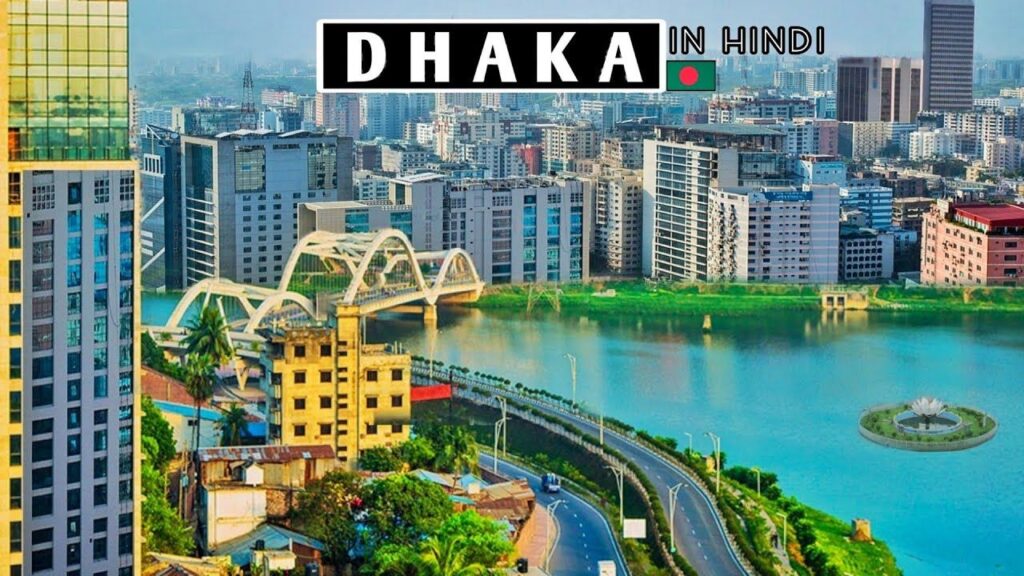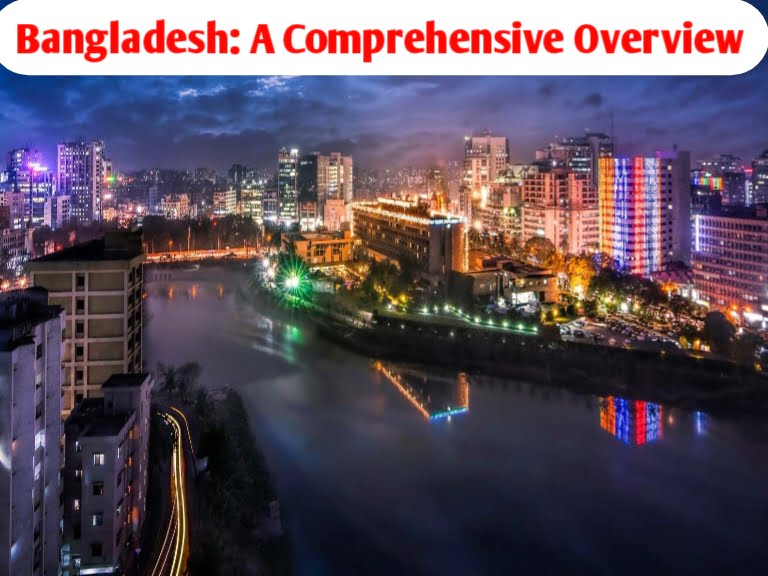Bangladesh: A Comprehensive Overview
A Comprehensive Overview
Bangladesh, officially known as the People’s Republic of Bangladesh, is a country located in South Asia. It shares borders with India to the west, north, and east, Myanmar to the southeast, and the Bay of Bengal to the south. With a rich cultural heritage, a complex history, and significant economic and social developments, Bangladesh is a nation of considerable global interest.
Geography and Climate
- Geography
- Location: Bangladesh is situated on the northern coast of the Bay of Bengal. It is characterized by its fertile plains and river systems, primarily formed by the Ganges-Brahmaputra delta.
- Major Rivers: The Ganges (Padma), Brahmaputra (Jamuna), and Meghna rivers play crucial roles in the country’s agriculture and economy. The delta region is known for its rich soil and high agricultural productivity.
- Climate
- Tropical Climate: Bangladesh experiences a tropical monsoon climate with three distinct seasons: a hot and dry winter, a hot and humid summer, and a rainy monsoon season.
- Natural Disasters: The country is prone to natural disasters such as cyclones, floods, and riverbank erosion, which significantly impact its population and infrastructure.
History and Politics

- Ancient and Medieval History
- Early Civilization: The region now known as Bangladesh has been inhabited since ancient times, with evidence of civilizations such as the Maurya and Gupta empires.
- Medieval Period: It was part of various historical empires and sultanates, including the Bengal Sultanate and the Mughal Empire, which left a lasting cultural and architectural legacy.
- Colonial Era and Independence
- British Rule: In the 18th century, Bengal came under British rule as part of British India. This period saw significant economic and social changes.
- Partition of India: In 1947, British India was partitioned, creating India and Pakistan. East Bengal became East Pakistan, part of Pakistan. However, cultural, linguistic, and political differences led to growing discontent.
- Liberation War and Independence
- Liberation War: In 1971, after years of political struggle and a brutal liberation war, East Pakistan gained independence and became Bangladesh. The country’s independence was officially recognized on December 6, 1971.
- Political Landscape
- Democracy and Governance: Bangladesh is a parliamentary democracy. It has experienced periods of political instability, but the political system has been marked by elections, political parties, and democratic processes.
- Current Leadership: As of the latest updates, Sheikh Hasina is the Prime Minister, leading the Awami League party. Her leadership has been influential in shaping the country’s recent development trajectory.
Economy
Reading more…. Sunita Williams: NASA Astronaut and Space Pioneer
- Economic Development
- Growth: Bangladesh has seen significant economic growth in recent decades, driven by sectors such as textiles, agriculture, and remittances. The country has been one of the fastest-growing economies in the world.
- Textile Industry: The garment industry is a major economic driver, making Bangladesh one of the world’s largest exporters of apparel.
- Challenges
- Poverty and Inequality: Despite economic progress, Bangladesh faces challenges related to poverty, income inequality, and access to education and healthcare.
- Infrastructure and Natural Disasters: Infrastructure development and vulnerability to natural disasters remain critical issues.
Culture and Society
- Cultural Heritage
- Language: Bengali (Bangla) is the official language and is a vital part of national identity. The language has a rich literary tradition, including works by Nobel laureate Rabindranath Tagore.
- Festivals and Traditions: Bangladesh celebrates various cultural festivals, including Pohela Boishakh (Bengali New Year), Durga Puja, and Eid al-Fitr. Traditional music, dance, and art are integral to the culture.
- Cuisine
- Food: Bengali cuisine is renowned for its diversity and flavors. Key dishes include rice and fish, various curries, and sweets such as roshogolla and sandesh.
- Education and Social Progress
- Education: The government has made strides in improving literacy rates and access to education. However, challenges remain, particularly in rural areas.
- Gender and Social Issues: Progress has been made in women’s rights and social development, though issues such as gender inequality and access to healthcare continue to require attention.
Tourism and Landmarks
- Natural Beauty
- Sundarbans: Home to the world’s largest mangrove forest and the Bengal tiger, the Sundarbans is a UNESCO World Heritage site.
- Cox’s Bazar: Known for its long sandy beach, Cox’s Bazar is a popular tourist destination.
- Historical Sites
- Mahasthangarh: An ancient archaeological site that dates back to the Maurya and Gupta periods.
- Sixty Dome Mosque: Located in Bagerhat, this historic mosque is another UNESCO World Heritage site.
Conclusion
Bangladesh is a country with a rich history, diverse culture, and dynamic economy. From its ancient roots and colonial past to its modern-day challenges and achievements, Bangladesh continues to evolve and make its mark on the global stage. Its resilience in the face of natural disasters, commitment to economic growth, and vibrant cultural heritage make it a nation of significant importance and interest.
How did you like the information given in our article today, please tell us in the comment section and for more such posts, follow our page The News House, thank you

